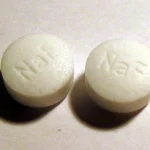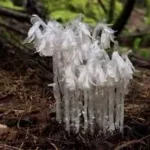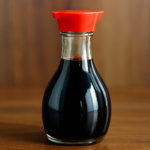
Boron is an enthralling chemical element with several distinct features and applications. Being a metalloid, it has properties of both metals and nonmetals, making it a versatile material used in a variety of sectors ranging from agriculture and construction to electronics and nuclear power. Boron, which was discovered in 1808, has played an important part in numerous technical advances and scientific discoveries, including the production of borosilicate glass and high-strength magnets. In this context, let’s look into some intriguing boron trivia to have a better grasp of this element’s significance in our life.
Here are some interesting facts about Boron:
Boron is a chemical element with the symbol B and atomic number 5. It is classified as a metalloid, which means it has properties of both metals and non-metals.
Boron is a metalloid, which means it has both metallic and non-metallic properties. It has a unique combination of properties, such as high melting and boiling points, low density, and good electrical conductivity.
Boron was discovered in 1808 by French chemist Joseph Louis Gay-Lussac and chemist Louis Jacques Thénard. They isolated the element from boric acid, which is found in some minerals.
Boron is named after the mineral borax, which contains boron compounds. The name borax is derived from the Arabic word “buraq,” which means “white.”
Boron is not found in its pure form in nature, but rather as borates or boric acid. Borates are minerals that contain boron and oxygen, while boric acid is a weak acid that contains boron, oxygen, and hydrogen.
Boron is the 51st most abundant element in the Earth’s crust, and the second most abundant element in the solar system. It is found in many minerals, such as borax, kernite, and ulexite.
Boron is used in the production of fiberglass, which is commonly used for insulation and construction. Fiberglass is made by melting boron-containing minerals and then spinning the molten material into fibers.
Boron is also used in the production of borosilicate glass, which is used in laboratory glassware and kitchenware. Borosilicate glass is resistant to thermal shock and has a low coefficient of thermal expansion, making it ideal for high-temperature applications.
Boron is used as a dopant in semiconductors to improve their electrical properties. It is added to silicon to increase its conductivity and to control the properties of the resulting electronic devices.
Boron is an essential element for plant growth, and is used as a micronutrient in agriculture. It is important for the development of cell walls and the transport of sugars and other nutrients in plants.
Boron has two naturally occurring isotopes: boron-10 and boron-11. Boron-10 is used in nuclear reactors as a neutron absorber, to control the rate of nuclear reactions.
Boron is the only non-metal that can form a pure covalent network solid, known as boron nitride. Boron nitride has a similar structure to graphite, but is much harder and more heat-resistant.
Boron carbide is one of the hardest known materials, and is used in the production of body armor and cutting tools. It is also used in nuclear reactors as a neutron absorber.
Boron is the first element in Group 13 of the periodic table, which also includes aluminum, gallium, indium, and thallium. These elements have similar properties, such as the ability to form compounds with three electrons.
Boron has a low melting point of 2076°C and a boiling point of 3927°C. This makes it a useful element for high-temperature applications, such as in refractory materials and nuclear reactors.
Boron is used in pyrotechnics to create a green color in fireworks. When boron compounds are burned, they emit a green flame.
Boron has a unique ability to form complex anions, such as the tetrahedral borate ion (BO4)3-, which is found in borax. Boron compounds are used as additives in detergents, cosmetics, and enamel glazes, and are also used in the production of high-strength magnets, abrasives, and electronic components.
Boron compounds are also used in the production of flame retardants, which are added to materials to reduce their flammability. Boron compounds can form a protective layer on materials, preventing the spread of flames.
Boron has been proposed as a potential fuel for fusion reactors, which would use the energy released by nuclear reactions to generate electricity. Boron fusion is considered a safer and more environmentally friendly alternative to traditional nuclear fission.
Boron is also used in the production of neodymium magnets, which are used in a variety of applications such as computer hard drives, electric motors, and wind turbines. Boron is added to the neodymium to improve its magnetic properties.
Boron is a relatively rare element, and its production is limited. Most boron is produced in the United States, Turkey, and Russia.
Boron has a unique ability to form stable compounds with nitrogen, known as boron nitrides. Boron nitride compounds have a range of properties, including high thermal conductivity, electrical insulation, and mechanical strength.
Boron has a number of potential medical applications, such as in cancer treatment and bone health. Boron supplements have been shown to improve bone density and may be useful in the prevention and treatment of osteoporosis. Boron neutron capture therapy is also being investigated as a potential treatment for certain types of cancer.
Boron FAQs
Boron is a fascinating element with unique properties and a wide range of applications. Here are some of the most common FAQs people search about boron:
What is Boron?
Boron (symbol B) is a metalloid element, meaning it has properties of both metals and non-metals. It has an atomic number of 5 and is found naturally in compounds called borate minerals. Elemental boron itself is never found freely in nature.
What Does Boron Look Like?
Boron exists in two main forms:
- Crystalline Boron: This form is a brittle, dark, lustrous solid. It is extremely hard, second only to diamond on the Mohs scale of mineral hardness.
- Amorphous Boron: This form is a brown powder. It is less reactive than crystalline boron.
Is Boron Important?
Yes, boron is an essential element for:
- Plants: Boron is necessary for cell wall formation, seed development, and proper nutrient uptake in plants. Boron deficiency can lead to stunted growth and poor yields.
- Humans: While not directly essential for human health, boron is believed to play a role in bone health, wound healing, and hormone metabolism.
What are Some Uses of Boron?
Boron has a wide variety of applications, including:
- Glass Production: Boron oxide (B2O3) is a key ingredient in borosilicate glass, a type of glass known for its heat resistance and strength. This glass is used for cookware, laboratory equipment, and even telescopes.
- Fibers: Boron fibers are used to strengthen composite materials used in airplanes, spacecraft, and sports equipment.
- Fire Retardants: Boron compounds are used in fire retardants to prevent the spread of flames.
- Rocket Fuel: Boron is used as a rocket fuel igniter and in pyrotechnic flares because it burns readily.
- Neutron Detectors: Certain isotopes of boron are used in neutron detectors due to their ability to absorb neutrons.
- Medicine: Boric acid, a boron compound, is a mild antiseptic and antifungal agent used in some topical medications and eye washes.
Is Boron Safe?
Elemental boron is generally considered non-toxic. However, high doses of boron compounds can be harmful and disrupt the body’s metabolism. Boron is not typically found in high enough concentrations in food to be a concern, but it’s important to follow recommended dosages if taking boron supplements.
Where is Boron Found?
Boron is not found freely in nature, but it is relatively common in the Earth’s crust, existing in various borate minerals. These minerals are mined and processed to extract boron for industrial use. Death Valley in California is one of the largest sources of boron in the world.
Interesting Facts About Boron:
- Although boron is a metalloid, some forms can be surprisingly good electrical conductors at high temperatures.
- Boron is a key ingredient in Borax, a common household cleaning product.
- Scientists are exploring the potential of boron-based materials for future batteries and semiconductors.
I hope this helps! Let me know if you have any other questions about boron.









